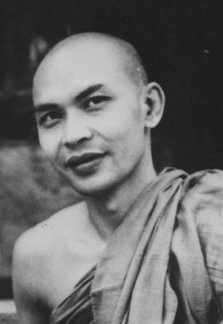Newah Community in Portland, USA Loves Its Yomaris
Rabin Man Shakya
Portland, Dec 23 (Nepal Oregon News): Yomari Punhi, one of the popular festivals of the Newah people of Nepal was celebrated this year with a lot of enthusiasm on Dec 22, 2018. Punhi means full moon day in Nepal Bhasa, the language of the Newah people of Nepal, and Yomari is a steamed dumpling which is made from rice flour with Chaku (a kind of sweet and solid molasses) and crushed sesame seeds.
Yomari Punhi is a post-harvest festival which falls on Thinla Thwo Punhi and which is the shortest day in Nepal. Newah farmers by this time have already filled their Bhakaris with paddy. This festival is celebrated with the wish and hope for better life and prosperity.
On the day of Yomari Punhi, programs of traditional masked dance are organized at the villages of Harisiddhi and Thecho at the southern part of the Kathmandu valley.
Yomari is also a symbol of Pancha Tatwo which consists of fire, aqua, air, sky and land. Rice flour represents land, molasses is taken as fire, water as aqua, empty space in yomari as sky and sesame seeds represent air.
Today, unlike 20 years ago, celebration of Yomari Punhi is not just confined to Nepal, it is celebrated by the Newah people across the world. Yomari Punhi was celebrated by the Newah people living in Oregon, USA at the Nritya Mandala Mahavihara, Portland on Saturday with much fanfare and huge enthusiasm.
About 50 Nepalese and Americans from Oregon took part in a Yomari Punhi program at the Mahavihara. Among them are Prajwal Vajracharya of the Nritya Mandala Mahavihara, Daya Shakya, vice president of World Newah Organization, Bharat Banskota, president of Nepali Association of Oregon and journalist Dr Rabin Man Shakya of Nepal Oregon News, USA.
The Newah people of Oregon were seen sitting in a big circle inside the temple of the Mahavihara to make the traditional Yomari dumplings.
(Making Yomari together) |
Yomari Punhi is a post-harvest festival which falls on Thinla Thwo Punhi and which is the shortest day in Nepal. Newah farmers by this time have already filled their Bhakaris with paddy. This festival is celebrated with the wish and hope for better life and prosperity.
On the day of Yomari Punhi, programs of traditional masked dance are organized at the villages of Harisiddhi and Thecho at the southern part of the Kathmandu valley.
Yomari is also a symbol of Pancha Tatwo which consists of fire, aqua, air, sky and land. Rice flour represents land, molasses is taken as fire, water as aqua, empty space in yomari as sky and sesame seeds represent air.
 |
| (How is Yomari making going on?) |
About 50 Nepalese and Americans from Oregon took part in a Yomari Punhi program at the Mahavihara. Among them are Prajwal Vajracharya of the Nritya Mandala Mahavihara, Daya Shakya, vice president of World Newah Organization, Bharat Banskota, president of Nepali Association of Oregon and journalist Dr Rabin Man Shakya of Nepal Oregon News, USA.
The Newah people of Oregon were seen sitting in a big circle inside the temple of the Mahavihara to make the traditional Yomari dumplings.

 |
| (Volunteers lending a helping hand.) |

The Yomari Dayekegu program was participated by Guruju Prajwal Vajracharya and Maa Padma Laxmi Karanjit. Likewise, Pramod Karanjit, Dina Shakya, Bharat Banskota, Sharmista Amatya, Kabindra Amatya, Kusumabati Bajracharya, Anjali Vajracharya, Uppa Shakya, Suva Shakya, Pawan Pradhan, Naveena Shakya, Bijaya Maharjan, Kabitanjali Amatya and Palistha Shakya were among the volunteers making the Yomaris. Also volunteering for Yomari Dayekegu were Kuon Hunt, Dale Hunt and Karen Pradhan.

 |
| (Yomaris are very yummy!) |
I remember back in 1970s our family in Kathmandu used to prepare the regular Yomaris and also Yomaris in the forms of deities, gods and goddesses like Kumar, Ganesh, Laxmi and Kuber to offer them to Goddess Annapurna. I remember during my childhood days, we as kids used to go to our neighborhoods in Kathmandu to ask for Yomari on this day and used to chant the traditional rhyme:
Tya Chhin Tya
BakachhinnTya
Lata Pata Kulechan
Juchhin Tya Yomari Chwamu
Uki Dune Haku
Byusa Maku
Mabyusa Phaku
Byumha Lyase
Mabyumha Buri Kuti
Newahs of Portland also sang the same rhyme at the program. Similarly, on the occasion, Mahayana Sutra Mahima gatha was recited by Guruju Prajwal Vajracharya, Daya Shakya, Pradeep Bajracharya, Rabin Man Shakya and Pramod Karanjit.
 |
| (Guruju Prajwal Vajracharya, Pradeep Bajracharya, Rabin Man Shakya and Pramod Karanjit reciting Mahayan Sutra Mahima.) |
According to the same folklore, the farmer couple presented Yomari to God of Wealth - Kuber - who was walking incognito. The God of Wealth rewarded the farmer couple with the riches.
There are many traditions and activities associated with Portland's Nritya Mandala Mahavihara but it is always looking for new ways to expand and explore those activities.
 |
| (Maa Padma Laxmi Karanjit giving away Yomaris to the guests.) (Nepal Oregon News writer Rabin Man Shakya, a Newar journalist in America, is also a Life Member of World Newah Organization.) |










